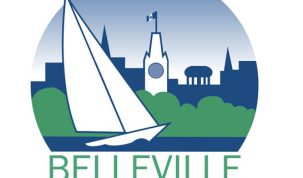Knowing signs of concussion keeps Ontario’s athletes safe on the playing field
The Ontario government is commemorating the sixth annual Rowan’s Law Day to raise awareness about concussion safety and safe participation in amateur contact sports. The province is marking the day by releasing the sixth Rowan’s Law progress report, which outlines Ontario’s progress addressing the 21 recommendations from the Rowan’s Law Advisory Committee to help protect young athletes. As of this year, those recommendations have now either been implemented or are in progress, making Ontario a continued leader in concussion safety.
“Every athlete is safer because Ontario’s sport community better understands their role to protect our athletes. Knowing what to do if a concussion happens — whether you are an athlete, a student, a parent, a coach, an official or an educator — can save lives,” said Neil Lumsden, Minister of Sport. “That’s why we continue to make every effort to provide easy access to concussion resources so safety protocols continue to be top of mind for coaches and other sport leaders across the province.”
In 2018, the Ontario government introduced the first legislation of its kind in Canada that changes the way the province’s sport organizations identify and address potential concussions. Rowan’s Law is named in honour of Rowan Stringer, a 17-year-old Ottawa rugby player who died tragically in 2013 from multiple concussions over a six-day period.
“I believe Rowan’s Law is the international gold standard of concussion legislation,” said Rowan’s father, Gordon Stringer. “This law should now be emulated by federal, provincial and territorial governments across Canada.”
“I feel like Rowan has fulfilled her dream of helping children because Rowan’s Law has saved lives and prevented injuries,” said Rowan’s mother, Kathleen Stringer. “In that way, Rowan has fulfilled her dream of making the lives of children better.”
This year, Ontario provided more than $208,000 in new funding to the Coaches Association of Ontario (CAO) and Parachute to update concussion resources, including those on Ontario.ca/concussions. This will help ensure Ontario athletes and coaches have access to current resources and protocols on concussion safety.
Since 2018, the government has invested more than $1.4 million to promote awareness and build educational resources about concussion safety, including:
- More than $600,000 to Parachute for the development of concussion awareness resources and templates
- $200,000 to the Concussion Legacy Foundation Canada (CLFC), to deliver a documentary film highlighting the impacts of concussions in amateur sport and profiling Rowan Stringer’s story
- $130,000 to the CLFC to expand community-based awareness and education programming on concussion safety
- $125,000 to the Canadian Mental Health Association to help develop and build awareness of the impact of sport-related injuries on mental heath and provide resources for athletes, coaches and parents on how to recognize and respond appropriately the symptoms
- $85,000 to the CAO to design and deliver resources for coaches across Ontario in support of implementing removal-from/return-to-sport requirements under Rowan’s Law. This investment will better support coaches across all sports with identifying and responding to suspected and diagnosed concussions
- $52,500 to the CLFC, in partnership with the Centre for Addiction and Mental Health, on a data-based research project for traumatic brain injuries
- $25,000 to Special Olympics Ontario to develop concussion awareness resources for athletes with intellectual disabilities.
The Ontario government is also working with Ontario Soccer, Rugby Ontario and Kickboxing Ontario on a pilot program to collect and report concussion incidence data at the field of play. This initiative may help to quantify the incidence of specific sport-related concussions in Ontario and provide data on the impact of concussion safety measures put in place through Rowan’s Law. It may also inform the development of future concussion safety policies and procedures.
Ontario is a leader in concussion safety and continues to carry out the recommendations of the Advisory Committee. The province urges federal, provincial and territorial governments across Canada to look to Ontario’s success and adopt Rowan’s Law nationwide. By working together athletes in Ontario and across Canada can participate, train and compete in a safe, inclusive and welcoming sport environment.
Quick Facts
- Rowan’s Law Day is commemorated in Ontario on the last Wednesday in September to raise awareness of concussions in sports.
- Rowan’s Law (Concussion Safety), 2018 (Rowan’s Law) received Royal Assent in March 2018. This legislation was intended to protect amateur athletes by improving concussion safety on the field and at school.
- The 21 recommendations of the Rowan’s Law Advisory Committee are implemented, continue to be implemented, with one in progress.
- The government is promoting awareness of concussion safety and Rowan’s Law by illuminating five iconic Ontario landmarks in purple (Rowan Stringer’s favourite colour) on September 25: CN Tower, Niagara Falls, the Big Nickel, and the city signs for Toronto and Ottawa.
- The sixth Minister’s progress report on Rowan’s Law is in response to the recommendations from the Rowan’s Law Advisory Committee 2017 report.
- On September 18, 2024, Minister Lumsden announced he is donating his brain to concussion research and called for the adoption of Rowan’s Law across Canada.
- The Ministry of Education also provides concussion resources, and school boards are mandated to ensure schools plan annual concussion awareness events for students on Rowan’s Law Day.






















